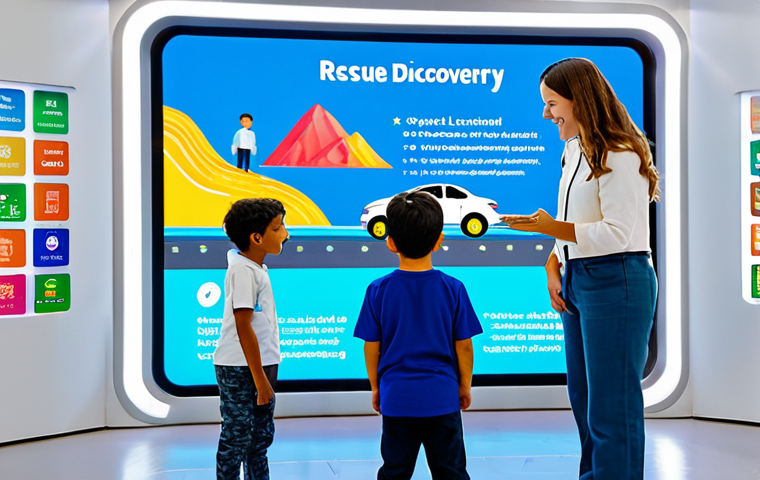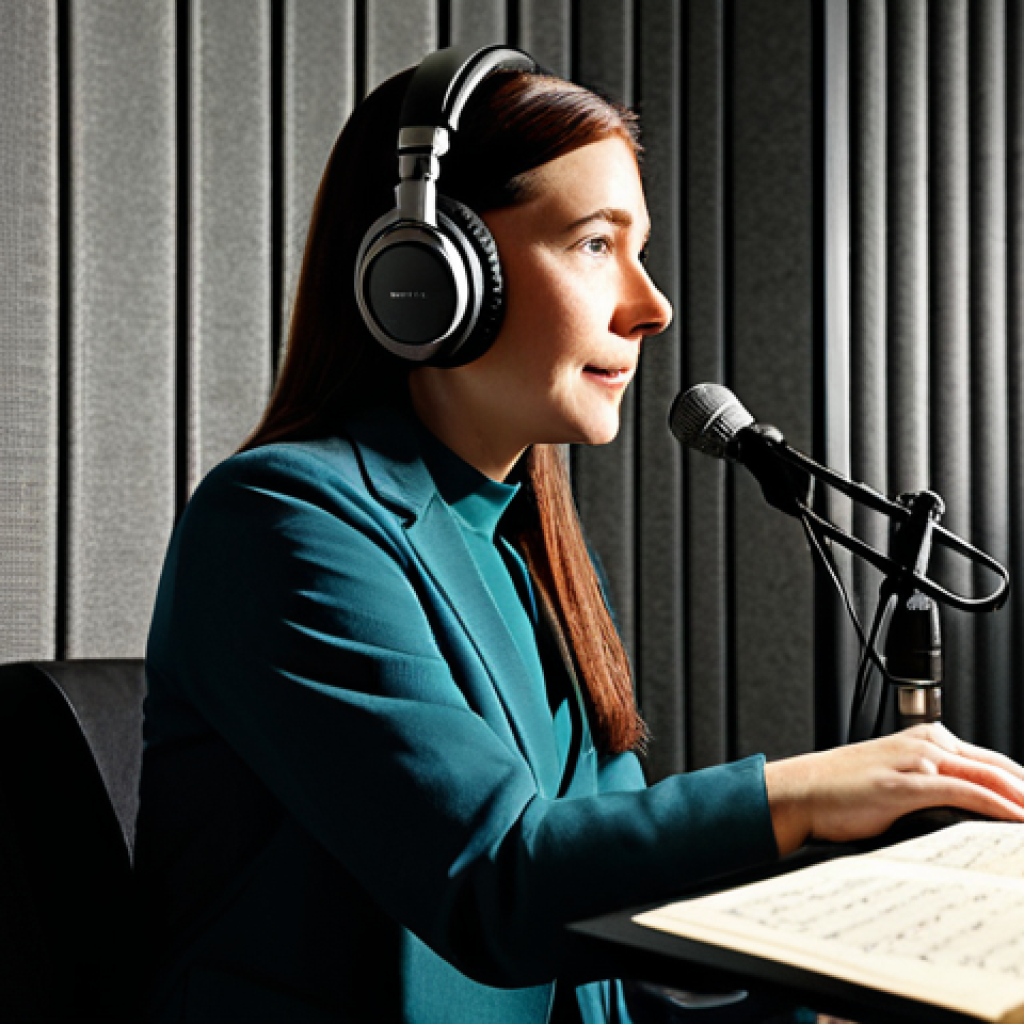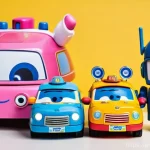Robocar Poli has captured the hearts of countless children globally, yet for many of us outside Korea, the initial exposure might be through a localized version.
But what about the *original* Korean dub? Having personally seen how my own niece, who’s currently obsessed with the show, responds to different language versions, I’ve truly come to appreciate the artistry behind it.
There’s something uniquely captivating about the original voices that give the characters their initial spark and raw energy. In today’s hyper-connected world, where children’s content transcends borders at an unprecedented pace, the quality of original voice acting, and its subsequent influence on global localization, is becoming an increasingly hot topic.
We’re seeing a clear trend where authenticity, even in a dubbed form, resonates deeply, and “Robocar Poli” is a prime example of this success story – a testament to how crucial every voice choice truly is for global appeal.
It makes you think about how these subtle linguistic nuances predict the future of international content consumption and cultural exchange. We’ll explore this in detail.
The Undeniable Resonance of Original Voice Acting

I’ve always been fascinated by how different audiences connect with global content, especially when it comes to children’s shows. My own niece, bless her little heart, is absolutely captivated by Robocar Poli.
But what really opened my eyes was observing her reactions to both the heavily localized English version and, thanks to a curious family experiment, the original Korean dub.
It was like watching two slightly different shows, and honestly, the original had a certain spark, an unquantifiable energy that just hit differently.
You know that feeling when you hear a song in its original language, even if you don’t understand the words, and it just *feels* right? That’s what I’m talking about.
There’s a raw authenticity that gets lost in translation sometimes, not because the localization isn’t good, but because the original voices carry the initial creative intent.
It’s truly fascinating to witness how that initial artistic choice sets the tone for an entire global phenomenon, and Robocar Poli is a prime example of where the original performers truly shaped the character’s soul, something I believe deeply impacts the viewer’s connection, even subconsciously.
The nuances, the specific vocal inflections, the pacing – it’s all part of a delicate tapestry that often goes unappreciated until you compare it directly.
1. Capturing the Initial Creative Spark
When a show like Robocar Poli is first conceived, the voice actors are often deeply involved in shaping the characters’ personalities, almost as much as the animators and writers.
They aren’t just reading lines; they’re bringing these animated figures to life, infusing them with unique vocal quirks, emotional depth, and a certain rhythm that becomes intrinsically linked to the character.
For instance, Poli’s determined yet gentle voice, or Amber’s caring and quick-thinking tone in the original Korean version, feels like the foundational blueprint.
It’s their first breath, their initial roar, if you will. This initial creative spark, born in the recording booth, is what gives the characters their authentic core.
And when you watch it, even if you don’t understand the language, that core often shines through. My niece, who probably picked up on the overall energy rather than the specific words, seemed to respond to the raw enthusiasm of the original.
It’s almost as if the actors’ initial passion for the roles imprinted itself onto the animation, making the characters feel more vibrant and real.
2. The Nuance of Non-Verbal Communication
Beyond the actual words, voice acting is packed with non-verbal cues that are incredibly powerful. Things like gasps, sighs, laughter, and the subtle variations in pitch and tempo contribute massively to character expression.
In the original Korean dub of Robocar Poli, these non-verbal elements feel organic and perfectly synchronized with the animation. There’s a natural flow to the conversations and reactions that convey more than just the dialogue.
It’s the little huffs of exasperation, the excited squeals, or the soft, comforting tones that truly define a character’s emotional landscape. When these elements are perfectly aligned with the visual storytelling, it creates a much richer, more immersive experience.
I’ve noticed this particularly in intense rescue scenes; the urgency in the original voices, the genuine relief in their exclamations – it just amplifies the dramatic tension and the emotional payoff.
It truly demonstrates how crucial the initial vocal performance is in setting the emotional baseline for any character, making them feel like a tangible presence on screen, regardless of the language barrier.
The Global Ripple Effect of Authentic Localization
It’s easy to think of dubbing as a straightforward process of translation, but having delved a bit into the world of children’s content localization, I’ve realized it’s an incredibly complex art form.
The goal isn’t just to make the words understandable; it’s to replicate the original emotional impact, the humor, the character’s essence, and even the cultural nuances as closely as possible.
Robocar Poli’s global success isn’t just because of its adorable characters and engaging plots; it’s also a testament to how well its localization teams have managed to bottle that original magic and re-release it in dozens of languages.
It truly makes you appreciate the unsung heroes of the dubbing industry who work tirelessly behind the scenes. They’re not just finding equivalent words; they’re finding equivalent feelings, equivalent comedic timing, and equivalent ways to convey sincerity and bravery.
This meticulous effort is what ensures that a show, regardless of its origin, feels genuinely connected to its audience, whether they’re watching it in English, Spanish, or any other language.
It’s a delicate dance between preserving the original and making it feel native to a new audience.
1. Bridging Cultural and Linguistic Divides
Localizing a children’s show like Robocar Poli involves more than just translating dialogue. It’s about bridging cultural gaps that might not be immediately obvious.
Humor, for instance, is incredibly culture-specific. A joke that lands perfectly in Korea might fall flat or even be misinterpreted in an English-speaking country.
The localization team has to find equivalent jokes or adapt the dialogue to resonate with a new audience without losing the original intent or the character’s established personality.
The same goes for emotional expressions and even common idioms. I remember seeing one instance where a subtle cultural reference in the original Korean was beautifully adapted into a universally understood expression of exasperation in the English version.
It’s a testament to the skill involved, ensuring that the show feels relatable and natural for children worldwide, fostering a sense of familiarity despite its foreign origin.
This level of thoughtful adaptation is what makes a localized version truly successful and not just a direct, jarring translation.
2. The Delicate Balance of Adaptation and Preservation
The best localization walks a tightrope between adapting content to suit a new audience and preserving the core integrity of the original creation. You don’t want to lose the unique flavor that made the show special in the first place, but you also need it to be accessible and engaging for local viewers.
For Robocar Poli, this often means adapting names, certain societal norms, or even specific sound effects to feel more familiar to English-speaking children.
However, the core character traits, the lessons learned, and the overall positive message remain consistent. It’s about creating a version that feels like it *could* have been originally produced for that market, while still respecting its roots.
This balance is crucial for long-term viewer engagement and for ensuring that the show’s positive messages about teamwork and safety resonate deeply, regardless of where the child is watching it.
It’s a painstaking process, but when done right, the payoff in terms of global reach and impact is immense.
The Unseen Power of Voice Direction and Performance
When you’re watching a show, you probably don’t think much about the specific instructions given to a voice actor, or the countless takes they might have done to get a single line just right.
But believe me, voice direction is a critical, often unsung, hero in the world of animation. In Robocar Poli, the seamless integration of character and voice speaks volumes about the expertise behind the scenes.
It’s not just about finding a good voice; it’s about shaping that voice to perfectly embody the character’s arc, their emotions, and their role within the story.
As someone who’s always admired the subtle craft involved in performance, I truly believe that the initial voice direction sets the blueprint for all subsequent interpretations, globally.
It’s like a conductor leading an orchestra, ensuring every instrument hits the right note to create a harmonious and impactful piece.
1. Shaping Character Identity Through Vocal Nuance
A character’s identity isn’t solely defined by their design or their actions; it’s profoundly shaped by their voice. Think about the brave and reliable tone of Poli, the gentle and nurturing voice of Amber, or the enthusiastic and playful sounds of Roy.
These vocal qualities are not accidental. They are meticulously crafted through expert voice direction, guiding the actors to infuse specific emotions, attitudes, and energy into every line.
It’s about understanding the core of each character and translating that into a distinct vocal signature. This process is paramount in animation, where the voice often precedes the final animation, giving the animators crucial cues for character movement and expression.
It’s a symbiotic relationship where the voice brings the sketch to life, establishing a recognizable and endearing personality that resonates with young audiences and makes the characters truly memorable.
2. The Symphony of Emotional Delivery
Effective voice acting is a symphony of emotional delivery, where every inflection, pause, and burst of sound contributes to the overall narrative. For a show like Robocar Poli, which often deals with problem-solving, cooperation, and moments of tension and relief, the emotional range of the voice actors is vital.
They need to convey fear, courage, sadness, joy, and determination convincingly, often within very short lines. This requires not just talent, but also the guidance of a skilled voice director who can orchestrate these emotional peaks and valleys.
The director helps the actors find the perfect balance, ensuring that the emotional beats land precisely where they should, connecting with the young audience on a deeper level.
This meticulous attention to emotional nuance is what makes the characters relatable and their adventures feel genuinely impactful, drawing children deeper into the world of Broomstown and its heroic rescue team.
The Future of Cross-Cultural Children’s Content
The way children’s content is consumed has changed dramatically in recent years, largely thanks to streaming platforms and global accessibility. It’s no longer just about Saturday morning cartoons in your local language; kids worldwide are now exposed to a rich tapestry of shows from diverse cultural backgrounds.
This shift has placed a greater emphasis on the quality of original content and the thoughtfulness of its localization. Robocar Poli stands as a shining example of how a well-crafted show, supported by strong initial voice acting and subsequent careful localization, can transcend borders and become a global phenomenon.
It really makes you think about how we’re shaping the next generation’s understanding of the world through media.
1. The Evolving Landscape of Global Consumption
Children today are growing up in an incredibly interconnected world. They might watch a show from Korea, then one from France, and then one from their own country, all within the same afternoon.
This evolving landscape of global content consumption means that quality, authenticity, and effective localization are more critical than ever. Parents, myself included, are increasingly discerning about the content our children consume, looking for shows that are not only entertaining but also enriching and culturally sensitive.
For shows like Robocar Poli to succeed, they need to appeal to a universal sense of wonder and adventure while respecting the cultural context of their new audiences.
This trend is pushing the animation industry towards higher standards in both original production and subsequent adaptations, ensuring that global content is not just accessible, but truly resonates across diverse demographics.
2. Investing in Quality for Enduring Appeal
The long-term success of any children’s program, especially one aiming for global reach, hinges on sustained investment in quality across the board – from animation and storytelling to, crucially, voice acting and localization.
Robocar Poli’s continued popularity years after its initial release is a testament to this principle. Studios are recognizing that cutting corners on voice talent or localization can significantly hamper a show’s potential to connect with international audiences.
It’s not just about saving money in the short term; it’s about building a beloved brand that resonates for years. This commitment to quality ensures that the characters remain engaging, the stories impactful, and the messages clear, regardless of the language.
Ultimately, investing in the finest talent and most meticulous processes yields content that not only entertains but also leaves a lasting positive impression on children worldwide.
Analyzing Localization Strategies: A Comparative Look
Diving deeper into how shows like Robocar Poli navigate the localization landscape, it becomes clear that there are various approaches, each with its own pros and cons.
Some productions opt for a more literal translation, while others take significant liberties to adapt to a new market. Understanding these strategies helps us appreciate the careful decisions made for a show to truly resonate globally.
I’ve often wondered about the internal debates and creative choices made behind the scenes to strike that perfect balance, especially for a show that relies so heavily on character and narrative clarity for young viewers.
| Localization Strategy | Description | Impact on Character/Narrative | Example (Robocar Poli context) |
|---|---|---|---|
| Direct Dubbing | Translates dialogue as literally as possible while matching lip-sync. | May lose cultural nuance; can feel unnatural if not meticulously done. | Focus on direct translation of rescue instructions, risking less natural flow. |
| Adaptive Dubbing | Translates dialogue for meaning, adapts humor/cultural references, maintains character essence. | Preserves character’s emotional core; highly relatable for new audiences. | Adapting Poli’s encouraging phrases to common English expressions for kids. |
| Transcreation | Re-creation of content for a new culture, going beyond translation to evoke same emotional response. | Can significantly alter jokes/plot elements to fit new cultural context. | Altering a specific Korean cultural reference into a universal safety lesson. |
| Voice-Over | A new audio track laid over original, often with original audio still faintly audible. | Less immersive than full dubbing; often used for documentaries, less for kids’ animation. | Not typically used for Robocar Poli, as it prioritizes full immersion for children. |
1. The Artistic Choices Behind Voice Casting
Choosing the right voice actors for a localized version is an immense undertaking, akin to recasting a Broadway show for a different audience. It’s not just about finding someone who sounds similar; it’s about finding an actor who can embody the character’s spirit and emotional range in a new linguistic and cultural context.
The voice director, working closely with the localization team, has to make incredibly nuanced artistic choices. Do they prioritize vocal similarity? Or emotional resonance?
Or comedic timing? Often, it’s a blend of all three, requiring auditions that truly test an actor’s ability to step into an already established character’s shoes and make them feel authentic for a new audience.
It’s a testament to the casting directors that Robocar Poli’s characters feel consistent and beloved across so many different language versions, which is no small feat in the world of animation.
2. The Audience Connection: Relatability and Resonance
Ultimately, the success of any localized children’s show boils down to its ability to connect with its audience. When a child watches Robocar Poli, regardless of the language, they need to feel that sense of adventure, safety, and friendship.
This connection is built on relatability and emotional resonance, which are heavily influenced by the voice acting and localization choices. If the voices feel off, or the dialogue unnatural, it breaks the immersion and distances the viewer from the characters.
The most effective localization ensures that the characters’ personalities shine through, that their lessons are clear, and that their emotional journeys are understandable and engaging.
This deep connection is what fosters enduring love for a show and why a seemingly small detail like a voice actor’s inflection can make all the difference in a child’s viewing experience.
Conclusion
Reflecting on the captivating world of Robocar Poli and the meticulous craft behind its global resonance, it’s clear that the magic truly begins with the original voice.
That initial creative spark, combined with the tireless efforts of skilled localization teams, allows a show to transcend borders and truly connect with young hearts worldwide.
It’s a powerful reminder that while technology bridges distances, it’s the human element – the voice, the emotion, the cultural understanding – that truly makes content universally beloved and impactful.
As parents and consumers, appreciating these nuances enriches our own viewing experience and highlights the artistry in children’s entertainment.
Useful Information
1. Explore Original Versions: If available, try watching a few episodes of your child’s favorite international show in its original language. Even without understanding the words, you might notice subtle differences in character energy and emotional delivery that enhance appreciation for the original artistic intent.
2. Appreciate Quality Dubbing: When a localized version feels natural and engaging, it’s a testament to the hard work of voice actors and directors. High-quality dubbing isn’t just about language; it’s about preserving the show’s spirit, humor, and emotional depth, making it truly accessible for your child.
3. Cultural Nuances Matter: Be aware that localization isn’t just word-for-word translation. It involves carefully adapting humor, cultural references, and even social norms to resonate with local audiences, which is crucial for a show’s success in diverse markets.
4. The Unsung Heroes: Remember that there’s a vast team of voice actors, scriptwriters, sound engineers, and voice directors working behind the scenes to bring foreign content to your screen. Their dedication ensures that shows maintain their integrity and appeal across languages.
5. Embrace Global Content: Encourage your children to watch shows from various countries. It’s a fantastic way to expose them to different cultures, storytelling styles, and perspectives, broadening their worldview from a young age.
Key Takeaways
The original voice acting forms the foundational blueprint for a character’s identity and emotional resonance. Effective localization is an intricate art that bridges cultural and linguistic divides, ensuring global appeal without losing the original essence.
Consistent investment in quality voice direction, performance, and localization is paramount for the enduring success and broad impact of children’s content on a global scale.
Ultimately, the ability of a show to foster deep audience connection and relatability across diverse markets hinges on these meticulous artistic and strategic choices.
Frequently Asked Questions (FAQ) 📖
Q: Why do many fans, even those introduced through dubbed versions, often feel a special connection to Robocar Poli’s original Korean voice acting?
A: I’ve really noticed this, especially watching my own niece, who’s absolutely glued to the screen, toggle between the different language versions. It’s fascinating!
From my perspective, the original Korean dub of Robocar Poli just has this raw, untamed energy. It’s like the voice actors, who were the first to truly embody these characters, poured their entire heart and soul into them without any pre-existing template.
They weren’t trying to match someone else’s performance; they were the performance. This gives Poli, Helly, Amber, and Roy an authentic core, a genuine spark that’s incredibly hard to replicate.
When you hear it, even if you don’t understand the words, you feel the emotion, the urgency, the joy. It’s not just a voice; it’s the very first breath these characters took, and that makes it uniquely captivating.
It’s that initial creative burst that truly makes the characters resonate on a deeper level, long before they hit the international airwaves.
Q: How does the quality of the original Korean voice acting in Robocar Poli impact its global localization efforts and overall success?
A: Oh, this is such a critical point, and one I’ve pondered a lot as I’ve seen children’s content go truly global. The original Korean voice acting in Robocar Poli sets an incredibly high bar.
Think of it this way: when you’re localizing a show, you’re not just translating words; you’re trying to capture and transmit the essence of the characters and their world.
If the original performance is flat or uninspired, no matter how talented the localized voice actors are, they’re starting from a major disadvantage. But with Poli, that initial “spark and raw energy” from the Korean dub gives localization teams a rich, vibrant foundation.
They’re working with performances that are already bursting with personality, making it easier to match and adapt that emotional depth. This undoubtedly contributes to its widespread appeal across continents.
It’s like having a master painting – even if you make copies, the original’s brilliance shines through, guiding every single stroke. This is why “authenticity,” even in a dubbed form, resonates so deeply with audiences, and Poli is living proof of that success.
Q: What broader trends in international content consumption and cultural exchange does Robocar Poli’s global success, particularly concerning its voice choices, highlight for the future?
A: This is where things get really interesting, looking ahead. What Robocar Poli’s success tells me, and what I’ve observed as more and more content crosses borders, is that viewers – especially kids – are incredibly perceptive.
They pick up on subtle cues far beyond just the plot. The “subtle linguistic nuances” and emotional integrity in the original voice acting are becoming increasingly paramount.
It’s no longer just about getting a show translated; it’s about preserving its soul. I mean, my niece, barely four, she might not articulate it, but she definitely reacts differently to the Korean versus the English versions – there’s a certain ‘feel’ she picks up on.
This indicates a future where content creators need to invest deeply in their initial artistic choices, especially voice casting, because that core will ripple out globally.
It suggests a growing appreciation for cultural authenticity, even in translated forms. We’re moving towards a world where kids are growing up exposed to a vast tapestry of global content, and the shows that truly connect are those that manage to retain their original heart, regardless of the language you’re watching them in.
It’s a fascinating shift, and Robocar Poli is definitely leading the charge on demonstrating how crucial those first voices truly are.
📚 References
Wikipedia Encyclopedia
구글 검색 결과
구글 검색 결과
구글 검색 결과
구글 검색 결과
구글 검색 결과






